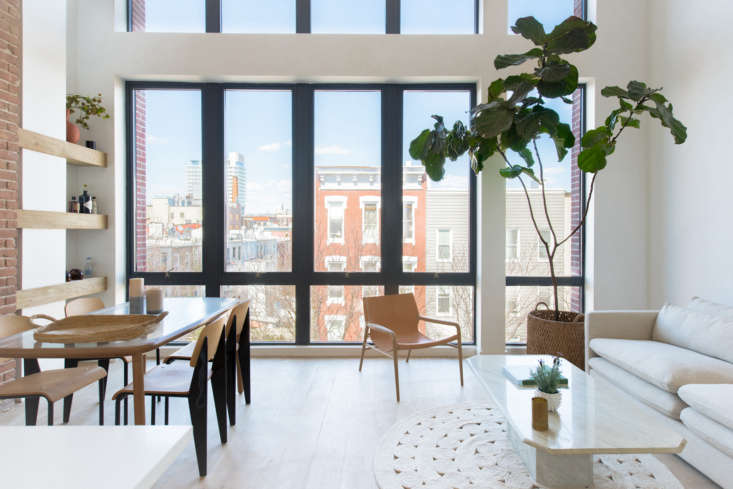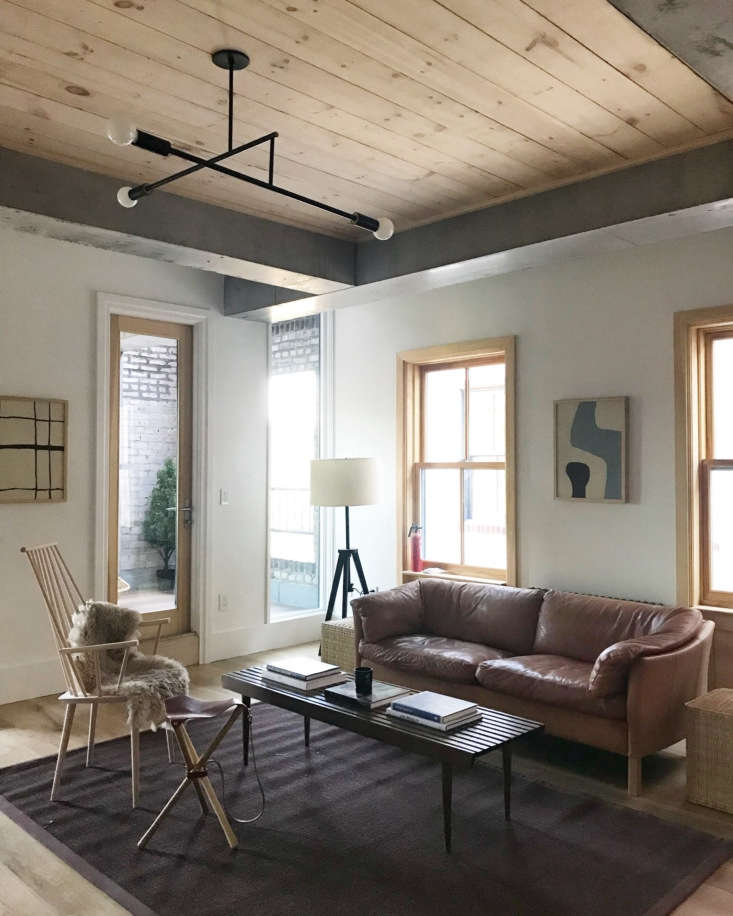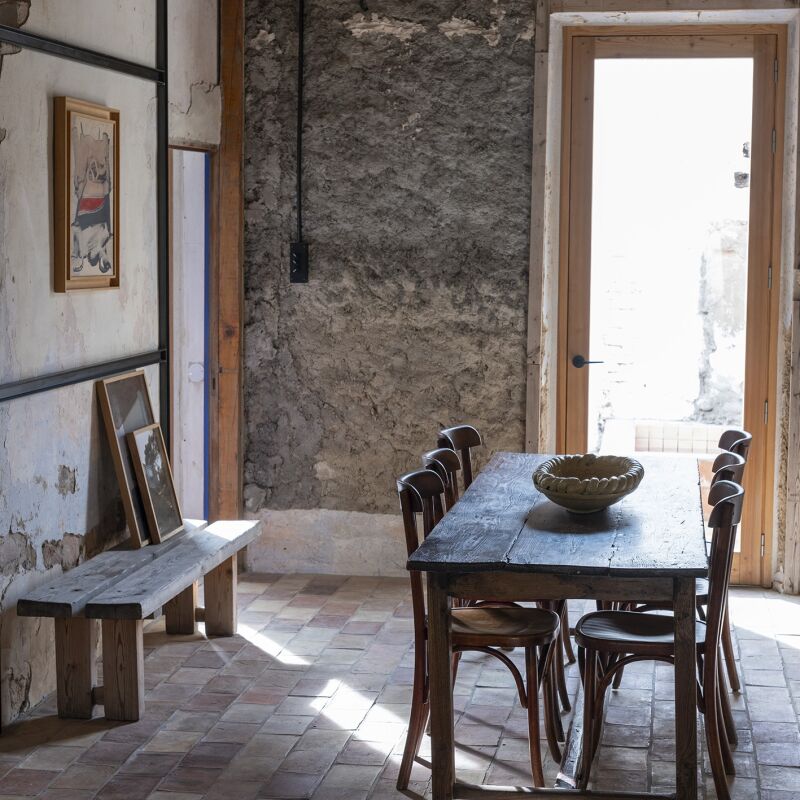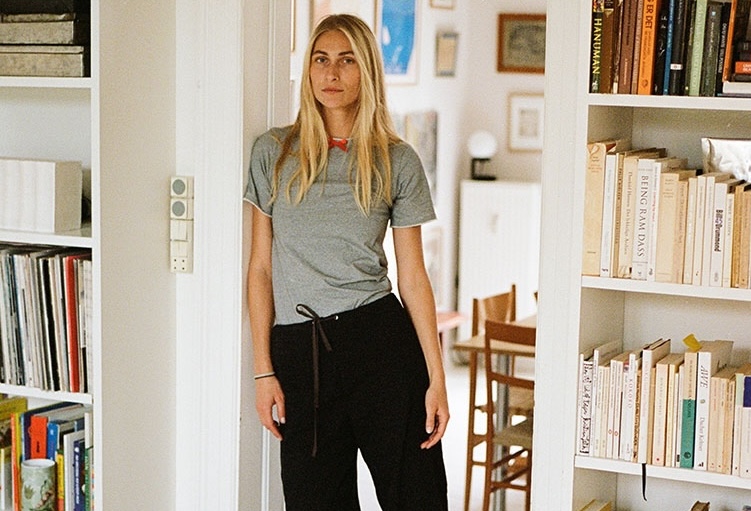No politics. No religion. No baggage: “When getting your home ready to sell, you want your place to have a strong point of view without any polarizing personality,” says Porter Hovey. She and her sister, Hollister, are in-demand Brooklyn interior staging specialists who fell into their trade during Porter’s four years as a real estate broker. “We started setting up my listings ourselves, and there was so much interest in the styling that we decided to just do it.”
They’re far from the only ones offering this service, but their work stands out for striking that rare balance between aspirational and real: Rather than creating the familiar soulless showcases, the Hoveys are all about spirited livability. “The idea is to amplify the good points without hiding the bad. We want people to say, ‘This is lovely, it feels so nice,’—and not ‘someone’s trying to pull a fast one on me.'” The two are often called in by developers who demand fast legwork: “Sometimes we’ll see the place and have a week to pull everything together.” They draw from their own growing collection of furniture—much of it purchased reasonably via LiveAuctioneers.com—and art made by Hollister. And though they usually start with empty spaces, they point out that their tactics also work for those who are trying to increase the salability of their own quarters. Here are their eight staging essentials.
Photography courtesy of Hovey Design.
1. Minimize (to the extreme).

We know moving out—and possibly carrying two mortgages during the sale process, not to mention paying for staging—is a hard-to-afford luxury. Most people live in the space they’re trying to sell and that means existing in a state of Marie Kondo–minimalist perfection for a few weeks or months. For your place to be ready to present, consider packing away 80 percent of your accessories and books, and 90 percent of the contents of your closets and cabinets. It’s a daunting process, but the sorting and minimizing needs to be done sooner or later—and it’s better not to pay movers to schlep things that you won’t want in your new home anyway.
A word about books: walls of bookcases and even random shelves suck up valuable space. Also most book spines are red, which can be a jarring trigger color (especially when Photoshopped for real estate imagery). Keep the noncontroversial books with neutral-colored spines in stacks with little objects to break up the space. Put the others away. Most window treatments, too, are best whisked away: You want to maximize the light and the square footage.
2. Paint it white.

No matter how pretty the gray or how warm and charming the cream, white walls look better online, where nearly all your potential buyers will see the space for the first time. We always recommend Benjamin Moore’s Decorator’s White: It’s crisp and clean, and art and furniture pop beautifully against it. Paint the walls, the moldings, the ceilings, and the doors (unless they’re beautiful natural wood, which they’re probably not). The uniform blank slate will make the space look bigger and the ceilings higher. If your kitchen looks dated, paint the cabinets, too. With updated, simple, matte-black cabinet pulls, it will look like you’ve done a full renovation, especially if you add a matte black faucet too.
3. Espresso, yes. Electrical cords, no.

For kitchens, we really want our sellers to look like wildly organized organic chefs who know how to conquer the farmers’ market. We fill big Mason jars full of neutral colored dry goods (black beans, black-eyed peas, navy beans, wild rice, pasta) and space them out along the back of the counter. We layer chopping block cheese boards, scatter white ceramics, and add French press and Moka coffee and espresso pots. We don’t want to worry about cords popping out, so the only appliances we show are Kitchen Aid mixers or Waring blenders, and that’s if the kitchen is huge.

4. Think neutral and natural.

If you’re not able to buy new furniture, a refresh of soft accessories can be revolutionary. For a foolproof approach, just stick to white or natural linen for bedding and throw pillows. The unmade wrinkly look doesn’t work for real estate, though, so if you’re not in the mood to steam out your sheets every morning, go for a linen quilt or coverlet, rather than a duvet. West Elm and Parachute make beautiful options, and they’re generally easier to make look hotel-like than a fluffy down comforter.
As for rugs, though we love colorful Moroccan designs, pattern-free, natural fiber options are in general your best bet. Heavily patterned Chinese and Middle Eastern rugs, no matter how great looking, don’t work for real estate: They weigh down and age the spaces (and their colors often look garish in real estate images). You can get beautiful eight-by-10 jute rugs for under $400 from Ikea and World Market—we like their Bleached Ivory Basket Weave Jute Rug. We also use white flokatis all the time. If you have yellowish oak floors, go for a bleached or white option rather than straw-colored—it will create a nice contrast and brighten the space.
Note that bathrooms are not a place for fun design adventures. Get a set of new, fluffy white towels and set them out for open houses. Buy some nice fancy bath products from one brand (such as Aesop or Kiehl’s) or decant your current products into uniform Muji bottles. This is where you want your home to look and feel like a hotel: Nobody likes the idea of inheriting someone else’s bathroom unless it looks very sterile.
5. Let everything breathe.


Even in massive spaces, we always use clean-lined, architectural furniture that allows air to flow beneath each piece. It makes any room look exponentially more spacious. For more ideas: 11 Tips for Making a Room Look Bigger.
6. Light to sell.

An inventive lighting plan, when done right, revolutionizes the design of a home. But this is not the time to get experimental or make statements: remember, you want your home to appeal to the widest population possible. We’ve found that almost all interiors look beautiful with classic milk glass globe lights—pendants, flush mounts, and sconces. West Elm’s Sculptural Glass Lighting series is timeless and works in historic and contemporary settings. The designs are all priced around $100 and can be delivered in a few days; we also like that they have access holes in the bottoms for easy bulb changes.
We prefer milk glass to clear glass because it diffuses the light and you don’t have to stress about the aesthetics of your light bulbs. Light bulbs themselves are an important consideration: Compact fluorescents can make a room look like Rikers Island; incandescents are still the prettiest.
7. Hang abstract art.

Art becomes a focal point of almost every room, and that can be a very good or bad thing. Primary colors are too jarring. Banksy prints and graffiti art are polarizing. Figurative works are often too specific. Hollister creates almost all our art and has been pushing geometric abstracts in shades of pastel and putty to add visual interest and help images pop online.
Neutral canvases, collages, and prints will always work, and they don’t have to be fancy: We’ve framed torn and crumpled-up construction paper, and drawn and painted directly on the particle board of Ikea frames. You can do a lot with black, white, and craft paper and a decent frame: For paintings on canvas, we often order maple Float Frames from Pictureframes.com; they do custom sizing for a steal.
8. Add life with nonliving plants.

Nothing beats the real thing when it comes to flowers, fruit, and foliage, but sellers need their space to be showing-ready at a moment’s notice, and wilting, dying stems aren’t going to win anyone over.
In lieu of the real estate cliché bowl of lemons in the kitchen, we stick to farmers’-market-looking faux vegetables in greens and purples: artichokes, leafy greens, figs, and purple grapes. The lettuces are creepily real looking and photograph very well—and for quick sourcing, see Amazon. There are also some hyper-realistic foam baguettes we like to throw on a chopping block or cheeseboard. For bouquets, we source all of our artificial flowers from CFD in the Chelsea Flower District. Flowers that look strangest and most fake in real life (such as allium, anthurium, poppies, and ranunculus) are the most convincing fakes—and are Instagram gold. Artificial blueberry and olive branches look great in more naturalist, rustic settings. (See 10 Easy Pieces: Eerily Lifelike Faux Plants for the Home.) Another place for plant styling is in window boxes: Whether stocked with real or faux, they add a screen of privacy that can take the place of window shades and, since you’re looking out at green, they often improve the view.
Keep up with Hollister and Porter at Hovey Design and @hoveydesign.
And here’s more Expert Advice:
- 12 Essential Tips for the Perfect Paint Job
- Hang a Mirror Facing a Window, and 8 Other Tips for Creating the Illusion of Space
- What to Know When Buying a House: 6 Problems that Shouldn’t Be Dealbreakers
Frequently asked questions
What is real estate staging?
Real estate staging is the process of preparing a home for sale or rent by arranging furniture and decor to showcase the home's best features and create a welcoming atmosphere for potential buyers or renters.
Why is real estate staging important?
Real estate staging is important because it can help potential buyers or renters envision themselves living in the home and can increase the perceived value of the property. A well-staged home can also attract more interest and potentially result in a quicker sale or rental.
What are some affordable staging tips?
Some affordable staging tips include decluttering and removing personal items, adding fresh flowers or plants, updating light fixtures or hardware, and adding a fresh coat of paint. Hollister and Porter Hovey also suggest using affordable, neutral decor pieces that can be reused in future homes or projects.
How can I stage a small space?
To stage a small space, it's important to focus on creating a sense of openness and maximizing the use of space. This can include using multi-functional furniture, such as a storage ottoman, and adding mirrors to create the illusion of more space. It's also important to keep the space clean and clutter-free, and to use light colors and natural light to brighten the space.
What should I avoid when staging a home?
When staging a home, it's important to avoid over-personalizing the space with too many personal items or decor that may not appeal to everyone. It's also important to avoid clutter and to focus on creating a sense of openness and flow throughout the home. Additionally, it's important to avoid neglecting any areas of the home, such as closets, that potential buyers or renters may want to see.




Have a Question or Comment About This Post?
Join the conversation